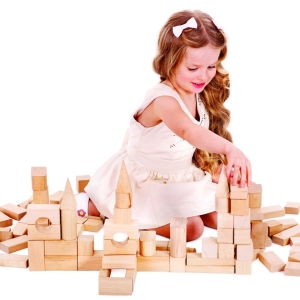Crawling - a preparatory stage in a child before walking. Climbing baby will prepare its support and motor system to further loads. The child begins to master these movements from five to ten months. Take care of the health of the karapuse's back and try to teach it crawling.
How do children crawl?
Climbing baby becomes the owner of his little world! He becomes confident and is not afraid to decide on his own. All kids crawl differently:
- the child rests on the hands and "makes steps" squatting;
- the support for the baby serves legs bent in her knees and straight hands, which he moves in turn;
- kroch crawls with hands, and bent legs only pulls up;
- the child is interested in moving forward one leg, thumping her way, and the second pulls up for himself;
- some kids crawl on the contrary and heels back like cancer;
- the kid moves lying on the tummy, and the legs repel.
There are such kids who are wring as a snake on the floor, striving for the appointed goal. How will your child crawl - depends only on it.

We teach the child to crawl
For this, there are various exercises. Before they are fulfilled, you will receive a consultation of the pediatrician, neurologist and orthopedic. Children do not want to crawl due to health problems. Therefore, it is impossible to stimulate the weak organism. If the kid is healthy, we begin to engage:
- exercise first. It will help the child to rely on straight handles. Put the crumb on the tummy. Hang a bright toy slightly above his head. The baby wants to grab the subject, will start climbing on the handles and will dyate to it. If the toy is not interested in the child - let him touch her, but not to play, and slowly pick up her up;
- exercise second. Designed to strengthen the vestibular apparatus and the baby will learn how to work with handles. Build from a children's robe or towels roller and place it under the chest of a crumb lying on the tummy. Handles with a baby's head from the roller must hang, and the belly with legs are located on the floor. The baby will start turning his head and will dyate to the toys;
- exercise third. It will help to learn firm stand on all fours. Place a roller under the chest and a child's tummy. Feet and hands hang over the floor. The kid on intuition will decide to rely on them, but you have to get up on all fours. If the kid has no violations of neurology and orthopedics, and he was half a year - complicate the task. From the poses on all fours, gently lift the child behind the legs, and it will begin to intuitively perform walking movements with handms;
- fourth exercise. He will teach crawling on all fours. Invite an assistant. Place the baby on all fours on the floor, and in front of him put a bright toy. One adult moves forward the left knob of the crumbs, and the other is the right leg and follow the exercise, helping the baby crawling.

What else will help teach a child crawling?
Make the baby from the player and the bed to the floor more often. Located on the cold floor soft bedspread or blanket. Give crumbling open space and turn over to the tummy. The child will see a lot of interesting things in the room and will want to get to attractive subjects. So children start crawling. But never leave a child without supervision!
Remember your childhood. Stand on all fours next to the bloop and show how interesting and easy to crawl. Invite a mom with a baby that already knows how to crawl. Your baby can take an example from him. Children love to repeat the actions of others.
Do not shout and do not scold the baby if he does not work. Praise him and enjoy the successes with the child, it will help to quickly navigate in the open space.

Stage of training crawling - the process is long. He will require considerable efforts from the child and parents. Do not worry if your child is not ready to crawl. Wait until the crumb will be interested in new movements, and help him in this difficult, but useful business.






























